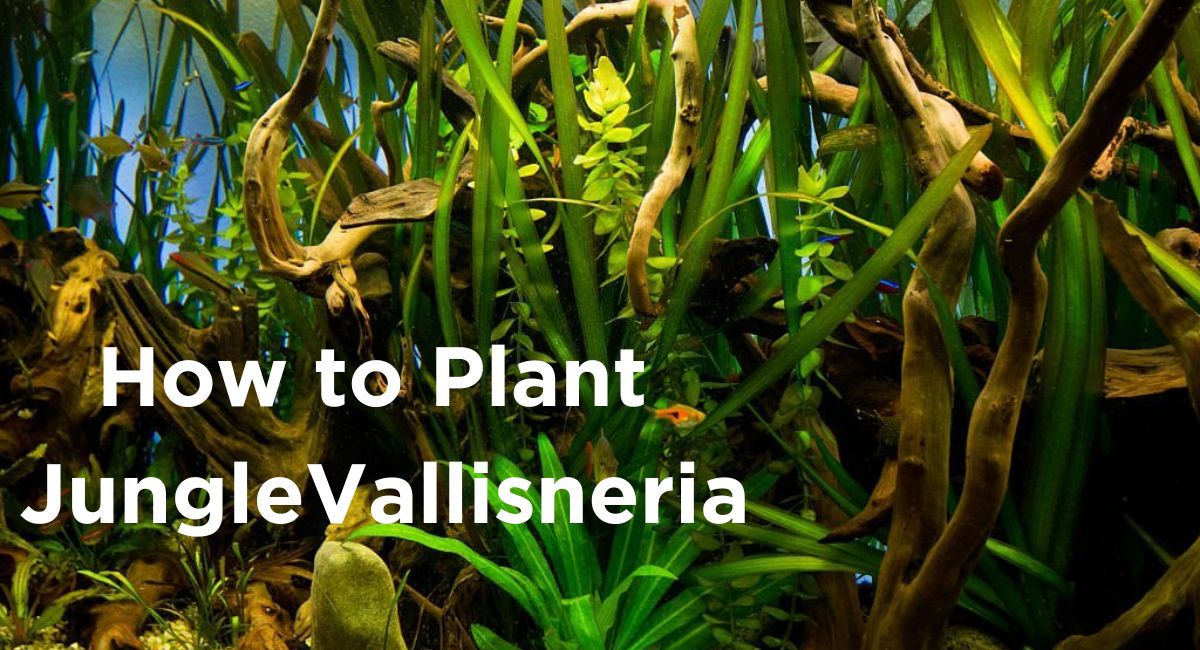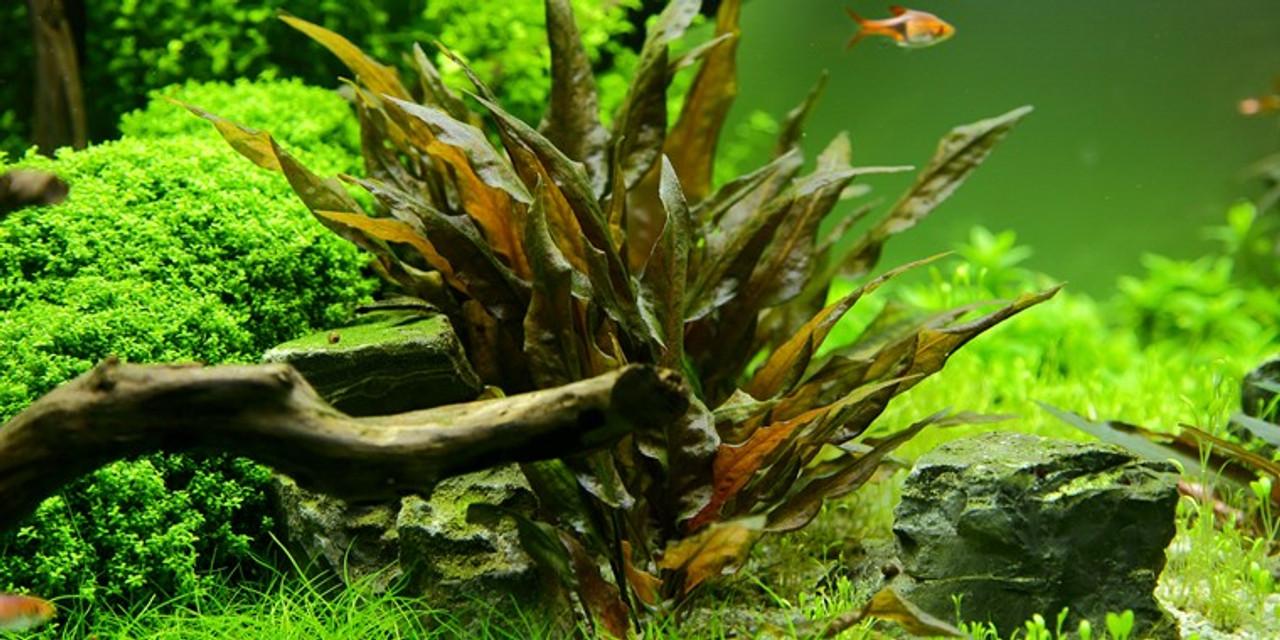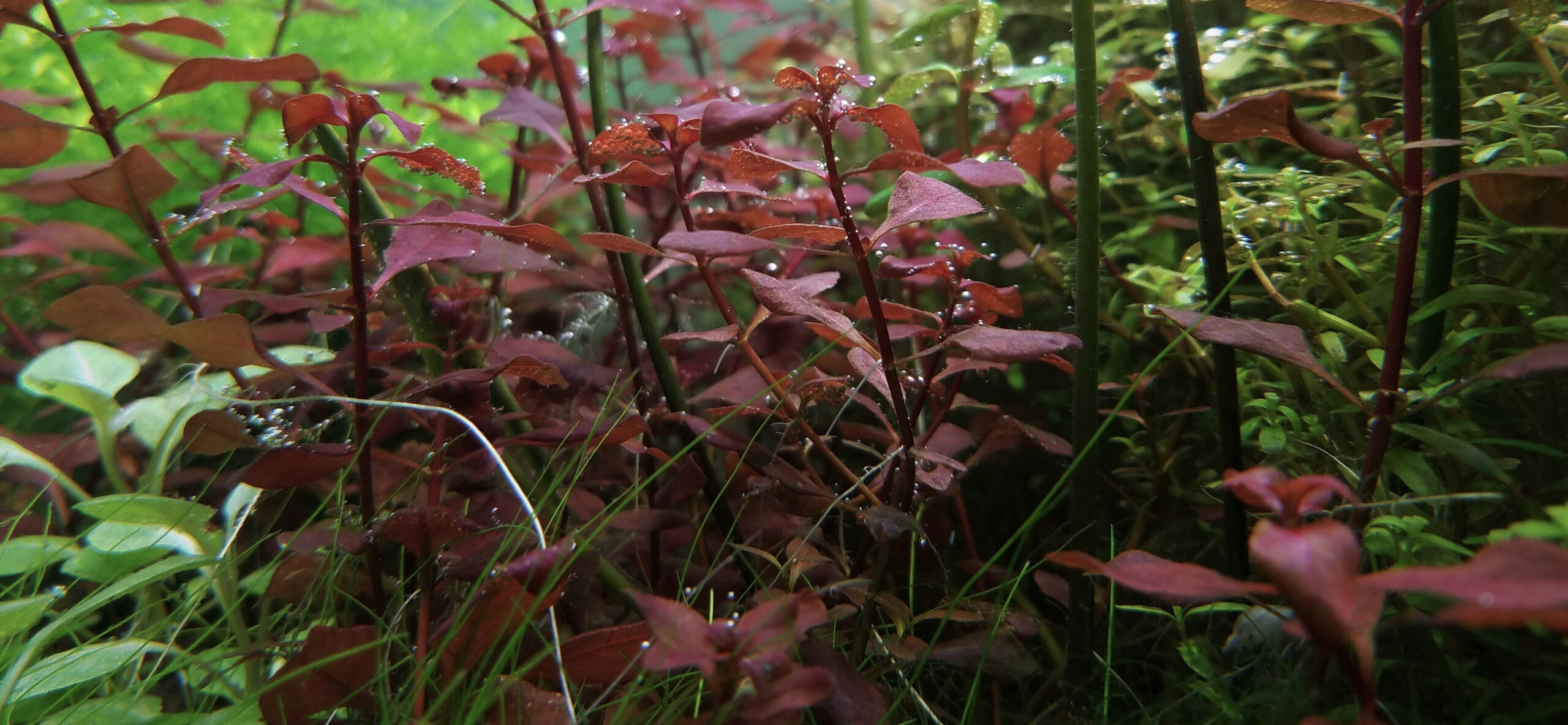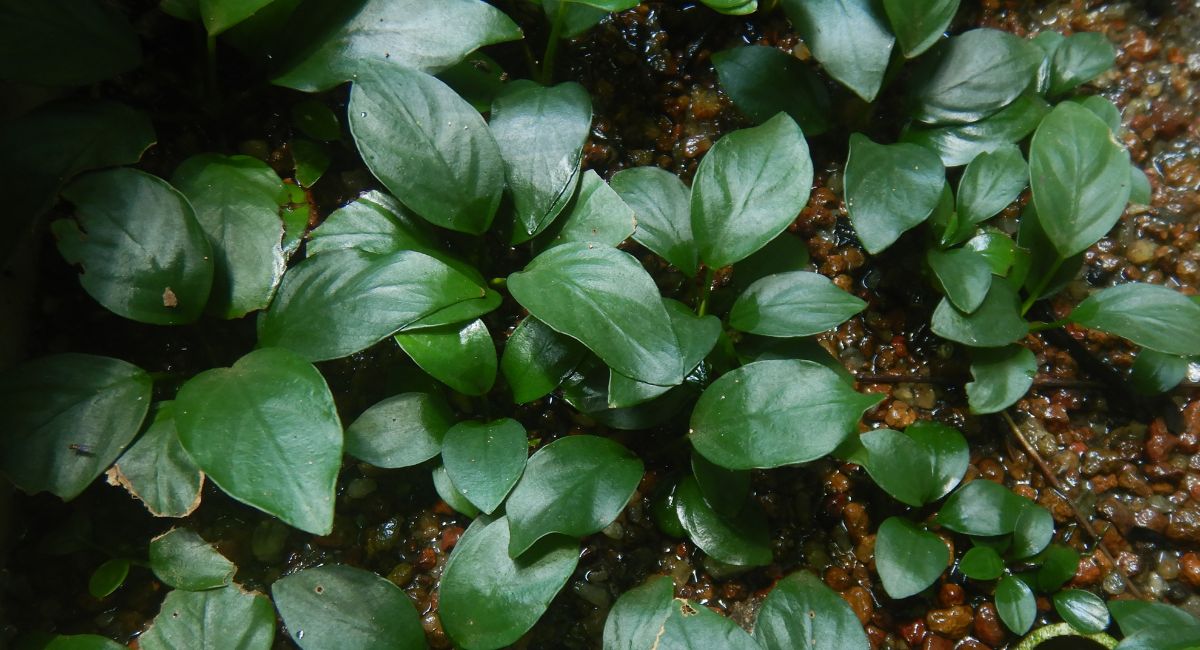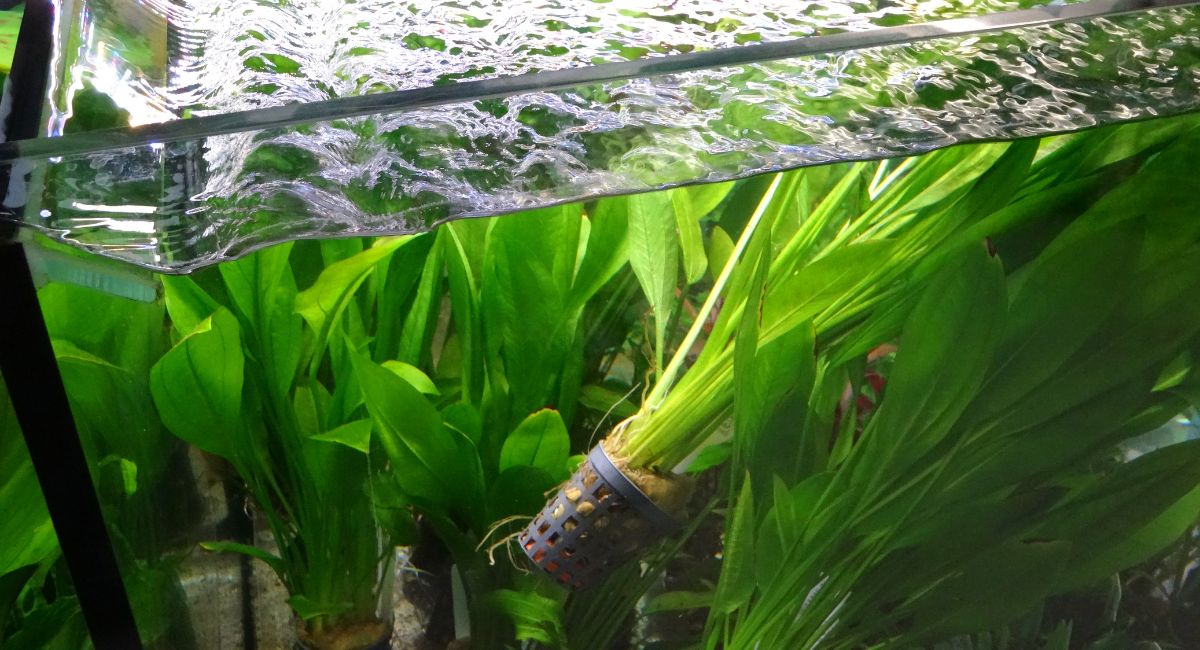Smartplantedaquarium.com participates in affiliate marketing programs. We may earn commissions on purchases made through our affiliate links. This doesn't affect our content or recommendations and we only recommend products we would put in our own tanks.
If you’re an aquarium enthusiast or looking to add some lush greenery to your freshwater ecosystem, planting Jungle Vallisneria can be a delightful and rewarding experience.
Jungle Vallisneria, also known as Vallisneria spiralis, is a captivating aquatic plant that brings a touch of natural beauty to your aquarium or aquatic environment. Its long, ribbon-like leaves gracefully sway in the water, creating the illusion of a verdant underwater jungle.
Whether you’re a seasoned aquarist or just starting in the world of aquascaping, you’ll find this step-by-step tutorial helpful in creating a thriving and visually appealing underwater habitat.
Let’s dive in and discover the wonders of this beautiful aquatic plant and how it can enhance the natural beauty of your underwater world.
Contents
- Overview of Jungle Vallisneria
- Required Equipment and Supplies
- How to Plant Jungle Vallisneria in Aquarium
- Mistakes to Avoid When Planting Jungle Vallisneria
- How to Use Jungle Vallisneria for Aquascaping
- Conclusion
- Frequently Asked Questions
- 1. What are the best companion plants for Jungle Vallisneria?
- 2. What are the best tank mates for Jungle Vallisneria?
- 3. How fast does Jungle Vallisneria grow?
- 4. How big does Jungle Vallisneria grow?
- 5. Is Jungle Vallisneria suitable for beginners?
- 6. Is Jungle Vallisneria suitable for a low-tech aquarium?
Overview of Jungle Vallisneria
Jungle Vallisneria, scientifically known as Vallisneria spiralis, is a captivating aquatic plant that belongs to the family Hydrocharitaceae. It is native to regions across Europe, Asia, and North America and is widely recognized for its ability to flourish in freshwater ecosystems. This plant is highly valued for its aesthetic appeal and is often used in aquascaping to create visually stunning aquariums and aquatic environments.
Beyond its ornamental value, Jungle Vallisneria plays a crucial role in maintaining a balanced aquatic ecosystem. As an aquatic vegetation, it helps improve water quality by absorbing excess nutrients, thereby reducing the likelihood of algal blooms. Additionally, the Vallisneria provides valuable habitat and shelter for aquatic organisms, contributing to the overall biodiversity of freshwater environments.
Description and Appearance:
Jungle Vallisneria, scientifically known as Vallisneria spiralis, is a captivating aquatic plant belonging to the family Hydrocharitaceae. As its name suggests, it thrives in freshwater ecosystems and is renowned for its ability to grow fully submerged, adding a touch of natural beauty to aquariums and aquatic environments.
Jungle Vallisneria is characterized by its long, ribbon-like leaves that gracefully sway in the water, creating the illusion of a lush underwater jungle. The plant’s leaves can grow quite tall, ranging from 12 to 24 inches or even more under optimal conditions. Each leaf is slender and slightly translucent, allowing light to penetrate through, facilitating photosynthesis in its submerged growth.
The root system of Jungle Vallisneria is equally impressive. It forms a network of strong, white, and robust roots that firmly anchor the plant to the substrate. These roots also play a crucial role in nutrient absorption, helping the Vallisneria thrive in various aquatic environments.
The foliage of Jungle Vallisneria comes in various shades of green, with some variations even featuring hints of reddish-brown under specific conditions. Its vibrant green coloration creates a visually appealing contrast to the aquatic surroundings, making it a popular choice for aquascaping enthusiasts and aquarium hobbyists.
Origin:
Jungle Vallisneria is native to regions across Europe, Asia, and North America, where it can be found in a variety of freshwater habitats, including lakes, rivers, and ponds. Due to its hardiness and adaptability, it has been introduced to many other parts of the world, where it has become naturalized in certain regions.
Different Types of Jungle Vallisneria:
While Jungle Vallisneria is primarily represented by the species Vallisneria spiralis, there are several subspecies and varieties that have been identified. These different types may exhibit slight variations in leaf shape, size, and color, providing aquarists with exciting options for their aquatic setups. Some common types include:
- Vallisneria spiralis ‘Tiger’ – This variety features green leaves with tiger-like stripes of darker color, adding a unique touch to aquariums.
- Vallisneria spiralis ‘Leopard’ – Similar to the ‘Tiger’ variety, but with spotted patterns resembling a leopard’s coat.
- Vallisneria spiralis ‘Red’ – As the name suggests, this type displays reddish hues in its leaves, providing an eye-catching contrast in aquariums.
- Vallisneria spiralis ‘Corkscrew’ – This type has leaves with a corkscrew or curly appearance, adding an interesting and dynamic element to aquascapes.
Benefits of Keeping Jungle Vallisneria in Aquariums
Jungle Vallisneria, also known as Vallisneria spiralis, is not only a visually stunning addition to aquariums but also offers a range of benefits that contribute to the overall health and balance of the aquatic environment. Whether you are a beginner aquarist or an experienced hobbyist, incorporating Jungle Vallisneria into your aquarium can prove to be advantageous in various ways:
| Benefits of Keeping Jungle Vallisneria in Aquariums |
|---|
| 1. Natural Filtration – Absorbs excess nutrients, preventing algae overgrowth. |
| 2. Oxygenation – Releases oxygen through photosynthesis, benefiting aquatic inhabitants. |
| 3. Algae Control – Outcompetes algae for nutrients, reducing algae blooms. |
| 4. Habitat and Shelter – Provides refuge for small fish, shrimp, and fry. |
| 5. Aesthetics and Aquascaping – Enhances the visual appeal of the aquarium. |
| 6. Oxygen Exchange – Facilitates gas exchange between water and atmosphere. |
| 7. Ecosystem Balance – Promotes biodiversity and ecological harmony. |
| 8. Low Maintenance – Easy to care for and readily propagates. |
1. Natural Filtration: Jungle Vallisneria plays a crucial role in maintaining water quality by acting as a natural filter. As it absorbs excess nutrients, such as nitrates and phosphates, from the water column, it helps to prevent algae overgrowth and keeps the aquarium water clean and clear.
2. Oxygenation: Through the process of photosynthesis, Jungle Vallisneria releases oxygen into the water. This oxygenation benefits not only the plant itself but also provides a valuable oxygen source for other aquatic inhabitants, ensuring a well-oxygenated and healthy environment.
3. Algae Control: By outcompeting algae for nutrients, Jungle Vallisneria helps to reduce the likelihood of algae blooms. Its fast growth rate and extensive root system help to create a balanced ecosystem, making it more challenging for algae to dominate the aquarium.
4. Habitat and Shelter: The long, flowing leaves of Jungle Vallisneria provide an ideal habitat and shelter for various aquatic creatures, including small fish, shrimp, and fry. These plants offer refuge from potential predators, reducing stress and promoting natural behaviors in your aquarium inhabitants.
5. Aesthetics and Aquascaping: With its tall, swaying leaves, Jungle Vallisneria adds a captivating and dynamic element to your aquascape. Its lush, green appearance serves as an attractive background or mid-ground plant, enhancing the overall beauty of your aquarium.
6. Oxygen Exchange: Jungle Vallisneria enhances the exchange of gases between the water and the atmosphere. This not only aids in oxygenating the water but also facilitates the release of carbon dioxide, benefiting the overall health of the aquarium ecosystem.
7. Ecosystem Balance: By providing a natural habitat and promoting biodiversity, Jungle Vallisneria contributes to the ecological balance of the aquarium. It encourages a thriving and harmonious environment, which is essential for the well-being of all aquatic inhabitants.
8. Low Maintenance: Jungle Vallisneria is relatively easy to care for, making it an excellent choice for both beginners and experienced aquarists. Once established, it can grow and propagate readily, requiring minimal maintenance.
Required Equipment and Supplies
To successfully plant and maintain Jungle Vallisneria in your aquarium, you will need the following equipment and supplies:
- Aquarium Tank: A suitable aquarium tank, preferably with a capacity of at least 10 gallons or more, to accommodate the Jungle Vallisneria and other aquatic inhabitants.
- Substrate: Choose a nutrient-rich substrate specifically designed for aquatic plants. Substrates with nutrients like iron and trace elements will support the healthy growth of Jungle Vallisneria.
- Jungle Vallisneria: Acquire healthy Jungle Vallisneria plants from a reputable source or local aquarium store. Ensure they are free from pests and diseases.
- Aquarium Filter: An efficient aquarium filter will help maintain water quality by removing debris and waste, providing a clean environment for the plants and fish.
- Heater: If necessary, a heater with a thermostat to maintain a consistent water temperature suitable for Jungle Vallisneria growth (usually around 72-82°F or 22-28°C).
- Lighting: Choose a suitable aquarium light that provides the right spectrum and intensity for the plants. Jungle Vallisneria requires moderate to high light levels for healthy growth.
- Aquarium Hood or Cover: A secure aquarium hood or cover prevents water evaporation, maintains stable water conditions, and helps retain heat.
- Water Conditioner: Use a water conditioner to remove chlorine and chloramines from tap water before adding it to the aquarium.
- Aquarium Test Kits: Test kits for monitoring water parameters such as pH, ammonia, nitrite, and nitrate levels to ensure water quality remains within acceptable ranges.
- Aquarium Gravel Vacuum: A gravel vacuum or siphon is useful for regular water changes and cleaning the substrate to prevent the buildup of waste and detritus.
- Aquarium Fertilizer: Consider using a liquid or root fertilizer specially formulated for aquarium plants to provide essential nutrients to Jungle Vallisneria.
- Aquarium Scissors or Pruning Tools: Pruning tools will help you trim and maintain Jungle Vallisneria leaves as they grow to prevent overcrowding and maintain aesthetics.
- Aquarium Thermometer: A thermometer to monitor water temperature and ensure it stays within the ideal range for Jungle Vallisneria.
- Decorative Elements (Optional): You may choose to include rocks, driftwood, or other decorative elements to enhance the overall aesthetic of your aquarium setup.
How to Plant Jungle Vallisneria in Aquarium
Planting Jungle Vallisneria in an aquarium is a straightforward process that can be accomplished with a few simple steps. Follow this guide to ensure successful planting and healthy growth of your Vallisneria:
Step 1: Prepare the Aquarium
- Ensure that your aquarium is clean and free from any contaminants. If needed, clean the tank and remove any debris or leftover food.
- Add the chosen substrate to the bottom of the aquarium. Vallisneria prefers nutrient-rich substrates, so use one specifically formulated for aquatic plants.
- If you plan to use other decorative elements like rocks or driftwood, position them in the aquarium according to your desired aquascape layout.
Step 2: Acquire Healthy Jungle Vallisneria
- Purchase healthy Jungle Vallisneria plants from a reputable source. Check for vibrant green leaves without any signs of discoloration, damage, or pests.
- Trim any damaged or excessively long roots before planting.
Step 3: Plant the Vallisneria
- Create small holes in the substrate using your fingers or a planting tool. Space the holes a few inches apart, leaving enough room for the Vallisneria to spread and grow.
- Gently insert the Vallisneria plant into each hole, ensuring that the roots are well-buried in the substrate.
- Plant the Vallisneria in groups or clusters to create a more natural and visually appealing appearance.
Step 4: Provide Adequate Lighting
- Jungle Vallisneria requires moderate to high lighting levels to thrive. Choose a suitable aquarium light that provides the right spectrum and intensity for plant growth.
- Position the light fixture above the aquarium at the recommended distance to ensure even coverage across all Vallisneria plants.
Step 5: Maintain Water Conditions
- Jungle Vallisneria prefers a temperature range of 72-82°F (22-28°C). Use a heater with a thermostat to maintain a stable water temperature within this range.
- Regularly check water parameters using test kits to ensure appropriate pH levels (around 6.5-8.0) and water hardness for Vallisneria growth.
Step 6: Fertilization and Maintenance
- Consider using a liquid or root fertilizer specifically formulated for aquarium plants to provide essential nutrients to the Vallisneria.
- Trim and prune the Vallisneria leaves as needed to prevent overcrowding and maintain an aesthetically pleasing appearance.
- Perform routine water changes and use a gravel vacuum to remove debris and maintain water quality.
Mistakes to Avoid When Planting Jungle Vallisneria
When planting Jungle Vallisneria in your aquarium, there are some common mistakes that you should avoid to ensure the health and successful growth of the plants. Here are few important mistakes to steer clear of:
- Burying the Crown: One of the most common mistakes is burying the crown of the Vallisneria plant. The crown is the area where the leaves emerge from the roots. If the crown is buried too deep in the substrate, it can lead to rotting and ultimately the death of the plant. Be careful when planting to leave the crown exposed above the substrate.
- Insufficient Lighting: Jungle Vallisneria requires moderate to high levels of light to thrive. Inadequate lighting can lead to stunted growth or elongated leaves as the plant stretches towards the light source. Make sure to provide suitable aquarium lighting with the right spectrum and intensity to support healthy growth.
- Overcrowding: Planting Jungle Vallisneria too closely together can lead to overcrowding as the plants grow. Overcrowding restricts the plants’ access to light and nutrients, hindering their growth and overall health. Plan the placement of the Vallisneria, leaving enough space between each plant to allow them to spread out as they grow.
- Neglecting Water Quality: Proper water quality is essential for the well-being of Jungle Vallisneria. Avoid neglecting water changes and water parameter monitoring. High levels of ammonia, nitrite, or nitrate can negatively impact the plants and other aquarium inhabitants. Regularly test the water and perform necessary water changes to maintain a healthy environment.
- Planting in High Flow Areas: Jungle Vallisneria prefers moderate water flow and planting them in areas with high water flow can stress the plants and make it challenging for their roots to establish in the substrate. Plant Vallisneria in areas with moderate water movement, away from strong water currents or direct water flow from filters.
How to Use Jungle Vallisneria for Aquascaping
Using Jungle Vallisneria for aquascaping can create a captivating and natural underwater landscape in your aquarium. Here’s a step-by-step guide on how to incorporate Jungle Vallisneria into your aquascape:
| Using Jungle Vallisneria for Aquascaping |
|---|
| 1. Positioning in Background or Mid-ground |
| 2. Background Focal Point |
| 3. Contrast and Texture |
| 4. Arranging Height |
| 5. Aesthetic Flow |
| 6. Hardscape Accent |
| 7. Foreground Transition |
| 8. Trimming and Maintenance |
- Positioning: Consider the placement of Jungle Vallisneria in your aquarium. Due to its tall and swaying leaves, it is best suited for the background or mid-ground areas. Create a visually appealing layout by planting the Vallisneria in groups, leaving enough space between each cluster to allow them to spread out as they grow.
- Background Focal Point: Jungle Vallisneria can serve as an excellent background focal point in your aquascape. Plant them in a row at the back of the aquarium, providing a lush green backdrop for other plants and aquarium inhabitants.
- Contrast and Texture: Use Jungle Vallisneria to add contrast and texture to your aquascape. Its long, ribbon-like leaves provide an attractive contrast to shorter, bushier plants like Cryptocoryne or Anubias, creating a visually engaging composition.
- Arranging Height: Jungle Vallisneria’s tall growth can help create a sense of depth and perspective in the aquarium. Plant taller specimens towards the back and gradually decrease the height towards the front to achieve a natural and visually balanced arrangement.
- Aesthetic Flow: Utilize the flowing and swaying nature of Jungle Vallisneria to create an aesthetic flow in your aquascape. The gentle movement of the leaves can add a sense of tranquility and realism, emulating the movement of aquatic plants in their natural habitat.
- Hardscape Accent: Pair Jungle Vallisneria with hardscape elements such as rocks or driftwood to enhance the overall aesthetics of the aquascape. Tuck Vallisneria plants behind or in between hardscape features to create a seamless and harmonious look.
- Foreground Transition: If you have a mid-ground plant like Dwarf Sagittaria or foreground plants in your aquascape, allow Jungle Vallisneria to transition from the background to the mid-ground. This creates a smooth and visually appealing flow from one section of the aquarium to another.
- Trimming and Maintenance: Regularly trim and prune Jungle Vallisneria as it grows to prevent overcrowding and maintain the desired aesthetics. Use aquarium scissors or pruning tools to trim older or damaged leaves at the base.
Conclusion
Mastering the art of planting Jungle Vallisneria in your aquarium is a rewarding journey that promises to enhance the natural beauty and ecosystem of your aquatic environment.
By following the steps outlined in this article, you can create a thriving underwater landscape that will not only delight your eyes but also provide numerous benefits to the inhabitants of your tank.
Once established, this hardy plant will serve as an essential contributor to the overall well-being of your aquarium. It helps in maintaining water quality by absorbing excess nutrients and acting as a natural filter, which is beneficial for the health of fish and other aquatic inhabitants.
Moreover, Jungle Vallisneria offers shelter and breeding grounds for shy or small species, creating a more natural and harmonious environment within the tank.
As you tend to your planted aquarium, always be observant and responsive to any changes in growth or appearance of the plants. Regular maintenance, including pruning and nutrient monitoring, will ensure the longevity and vibrancy of your Jungle Vallisneria bed.
The addition of Jungle Vallisneria to your aquarium provides both aesthetic and functional advantages. Embracing this method of planting allows you to establish a slice of the aquatic jungle in your own home, enriching the lives of your aquatic inhabitants and offering a tranquil oasis for you to enjoy and admire.
Frequently Asked Questions
1. What are the best companion plants for Jungle Vallisneria?
Jungle Vallisneria is a popular and hardy aquatic plant that pairs well with various other aquatic species. Some suitable companion plants for Jungle Vallisneria include Amazon Sword, Cryptocoryne species, Anubias, Java Fern, Water Wisteria.
2. What are the best tank mates for Jungle Vallisneria?
Jungle Vallisneria is an excellent addition to community aquariums and provides essential benefits for tank mates. Suitable tank mates for Jungle Vallisneria include:
1) Peaceful community fish like Tetras, Rasboras, Gouramis, and Corydoras.
2) Shrimp species like Cherry Shrimp or Amano Shrimp.
3) Snails, such as Nerite Snails or Mystery Snails.
3. How fast does Jungle Vallisneria grow?
Jungle Vallisneria is known for its rapid growth rate under favorable conditions. It can grow several inches in just a few weeks, making it an excellent choice for filling in the background of the aquarium.
4. How big does Jungle Vallisneria grow?
Jungle Vallisneria can grow quite tall, with its leaves reaching up to 2-3 feet (60-90 cm) in length. The plant’s long and ribbon-like leaves add a graceful and natural look to the aquarium.
5. Is Jungle Vallisneria suitable for beginners?
Yes, Jungle Vallisneria is highly suitable for beginners in the aquarium hobby. It is undemanding and can tolerate a wide range of water parameters. Its rapid growth and easy propagation make it a forgiving and low-maintenance plant for beginners to enjoy.
6. Is Jungle Vallisneria suitable for a low-tech aquarium?
Jungle Vallisneria is an ideal plant for low-tech aquarium setups. It can thrive in tanks without CO2 injection or high-intensity lighting. In fact, it may grow even better in low-tech environments due to its ability to absorb nutrients efficiently. Therefore, Jungle Vallisneria is an excellent choice for beginners or hobbyists who prefer a simpler and more natural approach to aquarium care.
